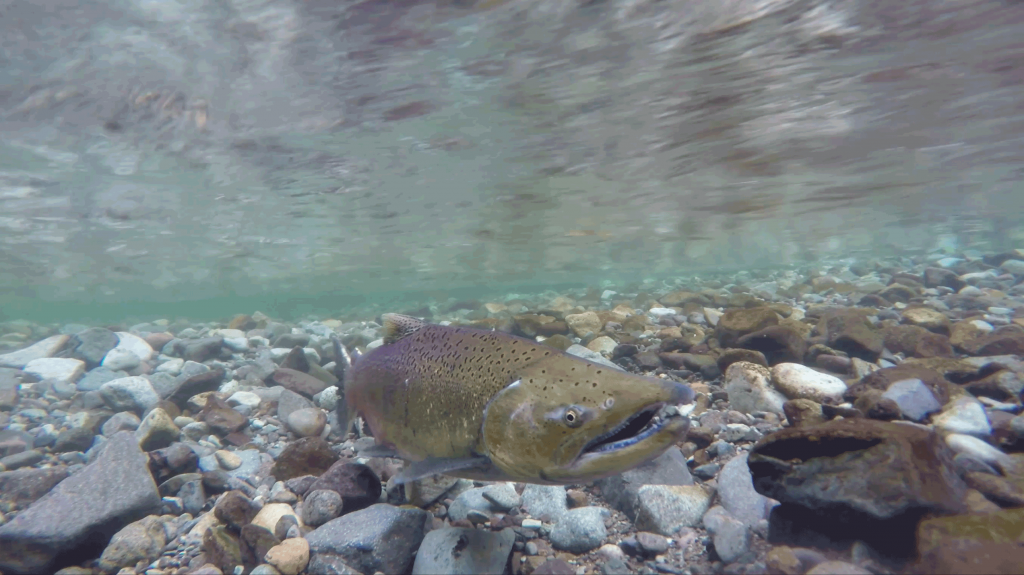A Watershed-Based Approach to Improving Salmon Habitat and Maintaining Hydroelectric Production in the Columbia River
March 14, 2024
In the recent Columbia River Cold Water Refuges Plan, the U.S. EPA projects that August temperatures in the lower Columbia will increase from the current 22°C to near 23°C in 2040 and 24°C in 2080: “August mean temperatures in the 23–24°C range would likely result in a significant amount of lethality to migrating adult salmon and steelhead.” This means that without more cool places for migrating salmon to rest as they move through the river, these iconic species could go extinct in the Columbia in as little as two decades.
Last year, regulators in the Northwest issued new Clean Water Act (CWA) permits to the U.S. Army Corps of Engineers (Corps) for four hydroelectric dams on the lower Columbia River (Bonneville, The Dalles, John Day, and McNary). These permits include new requirements to mitigate temperature impacts on migrating steelhead and salmon and improve “cold water refugia.”
The Freshwater Trust (TFT) believes that this new set of requirements creates a powerful opportunity to develop a watershed restoration program that reduces temperature impacts while restoring habitat and creating new refugia for salmon.
Because the Columbia River borders both Washington and Oregon, both states’ rules apply in the permit. While each state sets a numeric cap on temperature load, Oregon’s temperature standard includes a unique requirement to ensure the availability of cold-water habitat, or refugia, throughout the Columbia River corridor for migrating fish to rest in. To comply with the new permits, the Corps will therefore need to develop and implement a strategy that achieves the numeric temperature standard and Oregon’s cold water refugia standard. The Corps’ Water Quality Attainment Plans must be finalized by July 2025.
Luckily, the science is clear on what actions are most likely to achieve Oregon’s cold water refugia requirement. In its 2022 report on Rebuilding Interior Columbia Basin Salmon and Steelhead, the National Marine Fisheries Service (NMFS) outlined numerous actions necessary to achieve healthy salmon populations. NMFS highlighted “focused tributary and estuarine habitat and water quality restoration and protection” as a key strategy, and specifically emphasized the importance of “maintaining suitable water temperatures and flows in mainstem and tributary habitats,” “maximizing survival and production from freshwater habitats (including migration corridors),” and “maintaining and restoring access to climate resilient habitats for spawning and rearing.”
Similarly, the EPA report recommended “restoring riparian vegetation to provide river shading, restoring stream morphology and floodplain connectivity to reduce channel widths and create pools and groundwater connectivity, and restoring summer river flows that are more resistant to warming and increase cold-water refuge volume.”

For the last 20 years, TFT has developed watershed-scale restoration solutions for utilities in the Northwest dealing with the same kind of salmon-driven permit and mitigation obligations. TFT sees immense potential to replicate that approach here and connect temperature program work associated with the four lower Columbia dams with a large-scale temperature-driven restoration program that is already underway upstream in the Snake River basin, a major tributary of the Columbia.
Starting in 2016, TFT worked with the Idaho Power Company (IPC) to develop a watershed-based improvement program as part of its thermal compliance associated with the Hells Canyon Complex of hydroelectric dams on the Snake River. The resulting Snake River Stewardship Program (SRSP) was jointly certified by Oregon and Idaho under the CWA in 2019. Over the next few decades, the SRSP will direct approximately $350 million toward the restoration of riparian vegetation and the implementation of instream actions to address temperature compliance in eastern Oregon and western Idaho. To develop this program, TFT deployed precision watershed analytics to identify the specific improvement actions in the watershed that could deliver the highest-quantified thermal benefits for the lowest cost.
TFT sees these types of programs as key to balancing regulatory investments in technology/operational controls that address acute and chronic conditions at dams with complementary watershed compliance elements that will produce durable habitat and benefits where fish need it most.
This type of multi-pronged approach can benefit everyone through:
- cost-effective compliance that continues to support carbon-free hydroelectric production,
- better outcomes for salmon and the many communities, including tribes, who rely on this critical species, and
- a practical pathway to complying with the Oregon cold water refugia standard.
For these reasons, TFT thinks it’s critical that the Corps analyze and understand how a watershed approach can fit into its overall compliance portfolio. TFT has been working with a bipartisan coalition interested in supporting this approach through the upcoming Water Resources Development Act (WRDA), which is the biennial law that establishes the authorities for the Corps’ future work, including ecosystem restoration efforts.
#Army Corps of Engineers #Clean Water Act #Columbia River #congress #hydropower #policy #Snake River #watershed restoration
